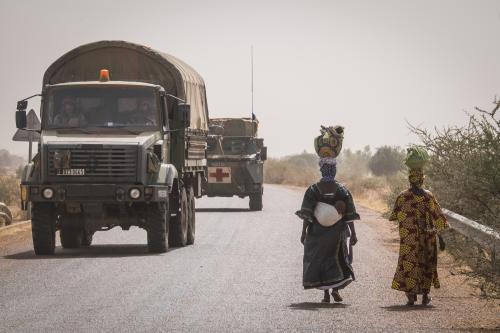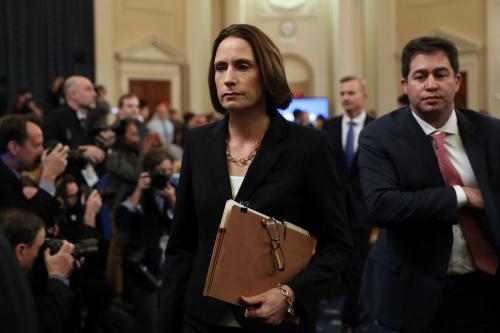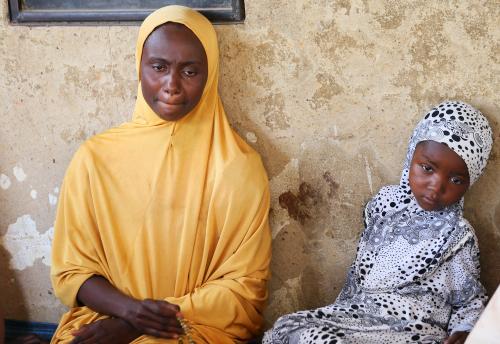Much like the rest of the world, Pakistan initially responded to Malala Yousufzai’s shooting by the Taliban on October 9 with widespread uproar and outrage. In the immediate aftermath of the incident, officials and the population displayed a rare show of unity against the Taliban, in stark contrast to the country’s response to the assassinations of the Punjab Governor Salmaan Taseer and Federal Minister Shahbaz Bhatti by extremists last year. As I wrote in an op-ed for the Express Tribune last week, this reaction against the Taliban in the wake of Malala’s shooting offered a glimmer of hope for Pakistan. But what should have been a powerful opportunity for the country to silence its inner demons and focus on development has turned to a dangerous pastime: finding someone else to blame.
The shift in the national conversation began with questions about the extensive media coverage Malala received: “why such focus on just one girl,” some said, “what about U.S. drone strikes that kill innocent people.” Fingers started being pointed everywhere but inward. Afghanistan was blamed for harboring the Pakistan Taliban after the Pakistani army operation against the militant group in March 2009. Elaborate conspiracy theories were hatched, the most insane of which held the United States responsible for first mentoring Malala and then having her shot narrowly enough to ensure her survival, in order to garner support for a potential Pakistani army offensive against the Taliban in North Waziristan.
This is not the first time a productive national conversation in Pakistan has been hijacked by convoluted, paranoid thinking. Why does this happen time and again? Perhaps because looking inward is painful and difficult for Pakistanis. According to the 2012 Pew Global Attitudes survey in Pakistan, a meager 12 percent of respondents are satisfied with the way things are going in the country. Pakistan is in a state of malaise, at war with itself, and in a perilous economic decline, and its view of this shooting and the correct response to it have become blurred. Let’s be clear about the facts and what Pakistan needs to do.
First, the war against the Tehrik-e-Taliban-Pakistan is Pakistan’s own war. The Taliban, and no one else, is responsible for shooting a girl who had the audacity to go to school. Pakistanis must get it straight: this incident has nothing to do with drone strikes. If drone strikes were to stop tomorrow, the Taliban would still exist in Pakistan, and they would still be burning down girls’ schools, targeting innocent women and children, brutally silencing anyone who dares to raise her voice. This is not speculation or conjecture: the group wreaked havoc over Swat in 2008 and early 2009, before the current level of drone strikes began.
Second, Pakistan needs to invest in development, and in particular, in education. In fact, the long-term solution to rooting out radicalization and militancy in Pakistan lies in girls’ education, precisely the thing which threatens the Taliban. The development dividends of female education are clear: a great deal of empirical evidence from across the world demonstrates that investments in female education give rich benefits in terms of economic, educational, and health advancements for the entire population, not just women. Importantly, my recent research establishes that the education of girls also makes them less supportive of terrorism and militancy. Specifically, I use data from a recent, large-scale public opinion survey in Pakistan to show that while uneducated women exhibit higher support for militant groups relative to uneducated men, educated women show much lower support for militant groups relative to educated men. These are militant groups like the Taliban and al-Qaeda. No wonder the Taliban are so frightened of girls’ schooling.
It is a fact that the Pakistani government has not prioritized the country’s development. Last year development spending in Pakistan was a paltry 2.8 percent of GDP. It is then no surprise that education, let alone girls’ education, has not been a priority. A new UNESCO report shows that two-thirds of children not attending school in Pakistan are girls, and the poorest girls in Pakistan are twice as likely to be out of school as the poorest girls in India, almost three times as likely as the poorest girls in Nepal and around six times as likely as the poorest girls in Bangladesh. Pakistani women desperately want their daughters to be educated, regardless of whether they are poor or illiterate themselves. I heard this from every woman I interviewed in Punjabi and Sindhi villages for a World Bank study I helped conduct a few years ago. The supply of schools is a problem for girls in Pakistan because the government builds one girls’ school for every two boys’ schools. Compounding the problem of access to schooling are cultural challenges to girls’ mobility, because girls cannot travel alone, especially after they reach puberty.
However, building more schools is by no means the entire answer. For the lucky ones who get to go to school, often the education they receive is poor and their learning is very limited. According to a large survey in Punjab, children at the end of third grade are functionally illiterate and innumerate. They are not able to perform basic mathematical operations, unable to write simple sentences in Urdu, and unable to recognize simple words in English. In addition, it is no secret that Pakistan’s national curriculum is biased and does not promote critical thinking. The education system as it currently stands perpetuates the cycle of poverty because the youth in Pakistan do not get the skills they need to get good jobs and lead productive lives.
Instead of getting mired in a murky conversation about the world machinating against Pakistan, it is time for Pakistanis to think about what we need to do to advance its development and to invest in girls’ education in particular. The government is blundering in its response to half of its population’s most basic and fundamental rights: to education, to speech, to work, to a dignified and purposeful life. This is a time for introspection: it is time for Pakistanis to take a long, hard look inward, and to get to work.



Commentary
Op-edPakistan’s Squandered Chance at Education Reform
October 31, 2012